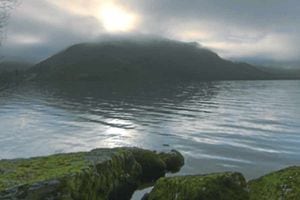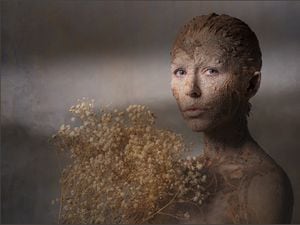TV review: The Great British Winter
As the long dark days of winter begin to recede, the harshness of the season is graphically illustrated in one of the country's most beautiful areas in yet another excellent BBC production.

In the second of a series of five programmes, the Great British Winter focuses on the Lake District, the land of deep lakes, imposing mountains and free running rivers.
It is an area that has inspired poets like William Wordsworth and the writer and philanthropist John Ruskin and features one of Britain's most extreme winter landscapes, a challenge both to the wildlife and people living there.
Countryfile presenter Ellie Harrison is a geographer and naturalist who has also worked on The One Show and Country Tracks. She takes us on a winter journey of discovery, uncovering the perils of our changeable weather, finding out about an extremely rare Arctic winter resident, and enjoying a lakeside spectacle put on by a family of otters.
Scratching below what appears to be the lifeless surface of the winter landscape, she shows how humans and animals and insects adapt to the bleak surroundings.
The Lake District is the largest wettest national park in England the rainfall feeds the 14 major lakes that give the region its name.
It is a dangerous place to be if not prepared particularly those who take to the high fells and get caught out by the rapidly-changing weather conditions.
A sunny day can be transformed into blizzard conditions in a matter of minutes mean- ing hundreds of walkers and climbers find themselves requiring the help of mountain rescue teams.
They can handle 600 emergency calls a year and last year dealt with 30 fatalities while the work of local weather experts involves trekking daily 3,000 feet up Hellvellyn, one of the area's highest peaks, to take weather readings to keep walkers informed of changing conditions.
The environmental cost of 15 million visitors a year is also highlighted by the constant work of volunteers keeping badly eroded paths safe for visitors.
Focus then switches to how evolution has allowed animals like indigenous Herdwick sheep to eke out and survive on scraps of food on barren slopes and the task of farmers in sub-zero temperatures having to melt ice to feed their other, less self-sufficient livestock.
Superb camerawork then focuses on how insects adapt and survive thanks to nourishment provided by fallen leaves, the brave but ultimately tragic journey upstream by salmon to breed only to die away after their work is complete and the fate of the rare Arctic char that struggle to survive with rising lake temperatures. Their population has declined 60 per cent in half a century.
It is beautifully filmed, expertly presented and interspersed with segments from other wildlife experts like Bill Oddie and Chris Packham.
For some visitors however, the climate is a warm winter break as Whooper swans migrate 800 miles from the Arctic climate of Iceland with their offspring to enjoy the relatively warm climate of the UK before making the epic return flight in the spring.
Finally, searching for otter poo as clues, naturalist Stephen Hewitt follows the behaviour of the elusive animals who feed for two short months on fish called the Shelley. The droppings from the animals give a clue to their movements before a nocturnal camera films younger otters feeding on those fish caught by their parents,
The footage is a perfect example of how wildlife can still enjoy times of plenty in the harshest of conditions. The rest of the series promises further treats.
Bill McCarthy





